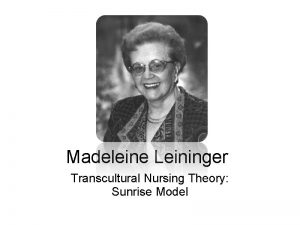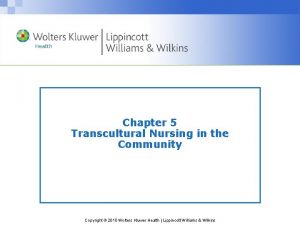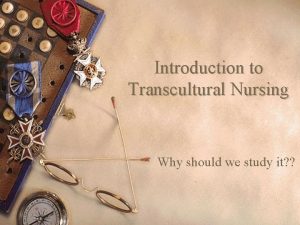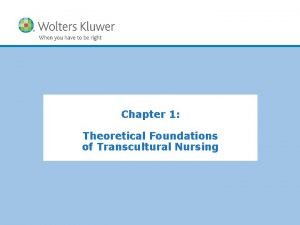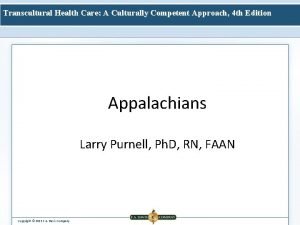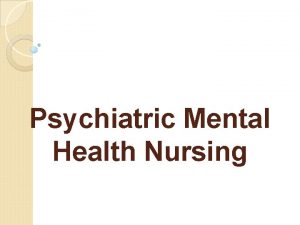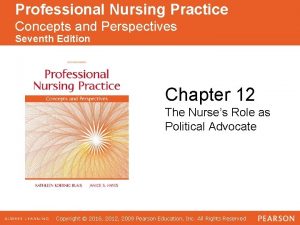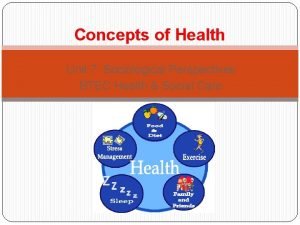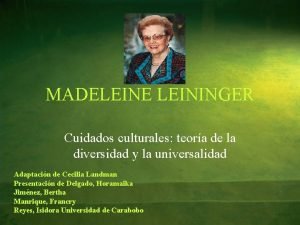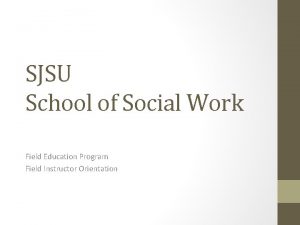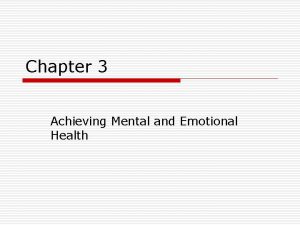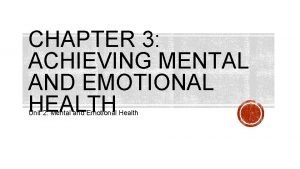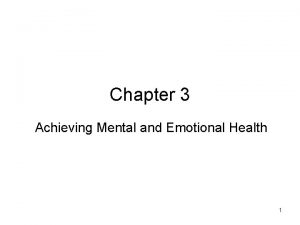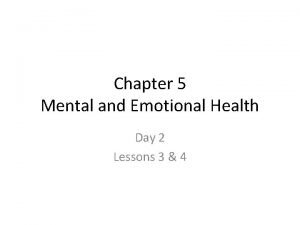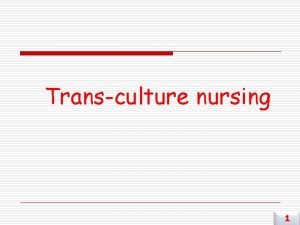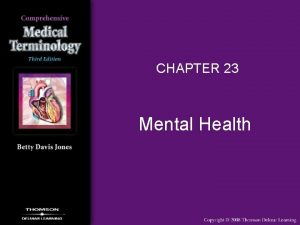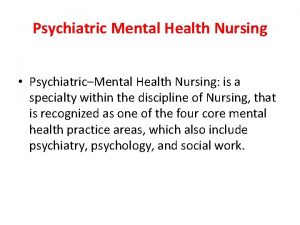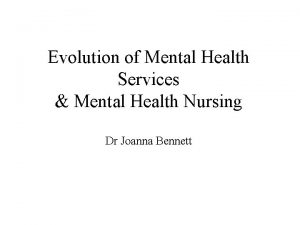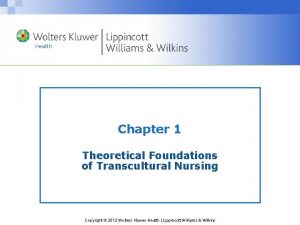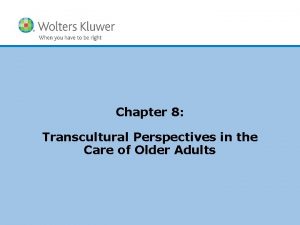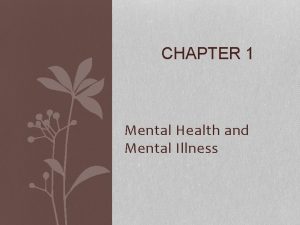Chapter 10 Transcultural Perspectives in Mental Health Nursing


























- Slides: 26

Chapter 10: Transcultural Perspectives in Mental Health Nursing Copyright © 2016 Wolters Kluwer Health | Lippincott Williams & Wilkins

Transcultural Perspectives in Mental Health Nursing #1 v Transcultural nursing: o Examines mental illnesses within a transcultural perspective o Assists in understanding how culture influences the ways in which we interpret and behave with mental illnesses Copyright © 2016 Wolters Kluwer • All Rights Reserved

Transcultural Perspectives in Mental Health Nursing #2 v Mental disorders are defined according to “cultural, social, and familial norms and values” (DSM-V, 2013, p. 14). v Culture provides the framework that is used to interpret “the experience and expression of the symptoms, signs, and behaviors that are criteria for diagnosis” (p. 14) v Cultural norms shape what is considered normal versus abnormal. Copyright © 2016 Wolters Kluwer • All Rights Reserved

Defining Mental Health Within a Transcultural Nursing Perspective #1 v According to the World Health Organization (2013): o“… there is no health without mental health. ” v “Health is a state of complete physical, mental, and social well-being and not merely the absence of disease or infirmity. ” v Determinants of mental health at any given point in time: “social, psychological and biological factors. ” Copyright © 2016 Wolters Kluwer • All Rights Reserved

Defining Mental Health Within a Transcultural Nursing Perspective #2 v Transcultural nurses should: o Understand patterns of values, beliefs, and practices for mental health care o Avoid stereotypes and ethnocentrism o Be aware of “norms” Copyright © 2016 Wolters Kluwer • All Rights Reserved

Question #1 v Is the following statement true or false? v Ethnocentrism can manifest as feelings of superiority or discrimination with respect to one’s own group or culture over another group or culture. Copyright © 2016 Wolters Kluwer • All Rights Reserved

Answer to Question #1 v True v Rationale: Ethnocentrism presents as subconscious disregard for cultural differences; it may also present as authoritative. v Example: believing that one’s own health care beliefs and practices are superior to another culture’s. Copyright © 2016 Wolters Kluwer • All Rights Reserved

Population Trends and Mental Health v Mental illnesses are identified as “common” in the United States. v Approximately 43. 7 million adults (~19%), aged 18 or older, were currently, or within the past year, diagnosed with a mental, behavioral, or emotional disorder. v Mental health care is moving from state and general “mental” hospitals to community-based service centers. Copyright © 2016 Wolters Kluwer • All Rights Reserved

Decision Making and Mental Health Care v Support and clear communication can be key to favorable outcomes for all clients. v Shared decision making (SDM) as a practice to advance mental health care encourages providers and consumers to collaborate on mental health care for the consumer. Copyright © 2016 Wolters Kluwer • All Rights Reserved

Disparities in Mental Health Care v. Reducing and eliminating disparities can be accomplished through: o Professional organization initiatives o Caring o Reducing stigma o Identifying disparities o Recognizing cultural pain: feeling “insecure, embarrassed, angry, confused, torn, apologetic, uncertain, or inadequate because of conflicting expectations of and pressures from being a minority” Copyright © 2016 Wolters Kluwer • All Rights Reserved

Question #2 v Is the following statement true or false? v American biases and prejudges have made it difficult for individuals of diverse cultures to have their beliefs and values acknowledged. Copyright © 2016 Wolters Kluwer • All Rights Reserved

Answer to Question #2 v True v Rationale: Historically, racism in America has led to difficulties in acknowledging and/or discussing differences in cultural values and lifeways for diverse cultural groups. Copyright © 2016 Wolters Kluwer • All Rights Reserved

Mental Health Care for Immigrants v Regarding immigrants, health care providers should be sensitive to: o Offensive terms, ex. “illegal alien” o Culture shock o Degree of acculturation o Feelings of depression, guilt, shame, anxiety v All of these factors put individuals at risk for depression, anxiety, substance abuse, and mental health problems. Copyright © 2016 Wolters Kluwer • All Rights Reserved

Cultural Criteria Changes in DSM-V v Culture-bound syndromes that have routinely been used by mental health professionals have now been replaced with three cultural concepts: o Cultural syndrome o Cultural idiom o Cultural explanation Copyright © 2016 Wolters Kluwer • All Rights Reserved

Culture-Bound Syndromes v Culture-bound syndromes, also called folk illnesses, culture-specific illnesses, or culture-specific syndromes, often are localized to a particular cultural group. v Many of these patterns are indigenously considered to be “illnesses, ” or at least afflictions, and most have local names. Copyright © 2016 Wolters Kluwer • All Rights Reserved

Cultural Values, Beliefs, and Practices of Specific Cultural Groups v Health care providers want to help clients of all cultures achieve their optimal level of human functioning. v An individual’s optimal level of human functioning can be specifically tied to the meanings and expressions of care of one’s culture. v The transcultural nurse is encouraged to understand the diversity within cultural groups with respect to mental health beliefs and practices. v A thorough history and cultural assessment can achieve this. Copyright © 2016 Wolters Kluwer • All Rights Reserved

Culturally Competent Mental Health Care #1 v Behavior can be misinterpreted and/or distorted if health care providers are not knowledgeable about caring for clients from diverse cultural groups. • Cultural competence is defined as a process in which nurses strive to work successfully within the cultural context of individuals, families, and communities. • Cultural competency can have a positive impact on the mental health care that is provided to clients of diverse cultural groups. Copyright © 2016 Wolters Kluwer • All Rights Reserved

Culturally Competent Mental Health Care #2 v Developing cultural competence through: o Mutual trust o Moving beyond cultural sensitivity to competencybased cultural care o Intrapersonal reflection: a personal inventory of one’s own cultural values, beliefs, and practices to begin to identify, understand, and remove personal cultural bias, ethnocentrism, and prejudice Copyright © 2016 Wolters Kluwer • All Rights Reserved

Important Factors to Consider in Transcultural Mental Health Nursing #1 Three important factors: o Communication and language o Spirituality o Experiences of pain Copyright © 2016 Wolters Kluwer • All Rights Reserved

Important Factors to Consider in Transcultural Mental Health Nursing #2 v Communication o Verbal and nonverbal o Developing trust o Availability of a certified translator/interpreter o Empathy Copyright © 2016 Wolters Kluwer • All Rights Reserved

Question #3 v Is the following statement true or false? v Researchers have shown that speaking the same language is the most important element in communicating with patients from diverse cultural backgrounds. Copyright © 2016 Wolters Kluwer • All Rights Reserved

Answer to Question #3 v False v Rationale: Research has shown that speaking the same language, while important, is not the most important element in communicating with patients from diverse cultural backgrounds. The attitude of the care provider is instrumental in helping the client be open to treatment options. Communicating an understanding of cultural diversity helps facilitate the client–nurse relationship. Copyright © 2016 Wolters Kluwer • All Rights Reserved

Important Factors to Consider in Transcultural Mental Health Nursing #4 v Spirituality o Spirituality refers to a broad sense of the inner experience of the self and a search for meaning; religion generally involves an institution with a given set of rules and observances involving devotion and ritual. o May enhance mental health and emotional stability. Copyright © 2016 Wolters Kluwer • All Rights Reserved

Important Factors to Consider in Transcultural Mental Health Nursing #5 v Pain o Pain has a component that includes emotional elements. o Pain and depression linked. o Psychosomatic pain, or pain with psychological components. Copyright © 2016 Wolters Kluwer • All Rights Reserved

Question #4 v There is increasing evidence to suggest that pain can be a physical symptom of which mental health illness? A. Paranoia B. Alcoholism C. Drug abuse D. Depression Copyright © 2016 Wolters Kluwer • All Rights Reserved

Answer to Question #4 v D. Depression v Rationale: There is increasing evidence to suggest that pain can be a physical symptom of depression and that pain and depression are common comorbidities. Copyright © 2016 Wolters Kluwer • All Rights Reserved
 Chapter 20 mental health and mental illness
Chapter 20 mental health and mental illness Sunrise model madeleine leininger
Sunrise model madeleine leininger Transcultural nursing questions
Transcultural nursing questions Patricia enciso
Patricia enciso Transcultural interprofessional practice model
Transcultural interprofessional practice model Transcultural health care
Transcultural health care Transcultural health care definition
Transcultural health care definition Mental health jeopardy questions
Mental health jeopardy questions Mental health definition in nursing
Mental health definition in nursing Psychiatric nursing diagnosis
Psychiatric nursing diagnosis Conclusion of community mental health nursing
Conclusion of community mental health nursing Professional nursing practice 7th edition
Professional nursing practice 7th edition Professional nursing practice concepts and perspectives
Professional nursing practice concepts and perspectives Perspectives in health information management
Perspectives in health information management Unit 7 health and social care
Unit 7 health and social care Madeleine leininger teoria
Madeleine leininger teoria Fan culture theory
Fan culture theory Sjsu social work
Sjsu social work Leininger's sunrise model
Leininger's sunrise model Chapter 3 achieving mental and emotional health answer key
Chapter 3 achieving mental and emotional health answer key Chapter 3 achieving mental and emotional health
Chapter 3 achieving mental and emotional health Chapter 21 mental health diseases and disorders
Chapter 21 mental health diseases and disorders Chapter 3 lesson 2 health
Chapter 3 lesson 2 health Withdrawal glencoe
Withdrawal glencoe A firm observance of core ethical values
A firm observance of core ethical values Chapter 3 achieving mental and emotional health
Chapter 3 achieving mental and emotional health Chapter 15 achieving mental and emotional health answer key
Chapter 15 achieving mental and emotional health answer key

